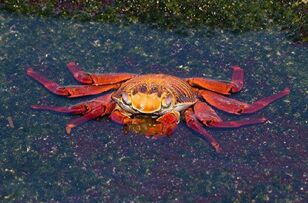谁该为受神经毒素污染的太平洋负责?
|
There's a fight brewing in the Pacific about toxic algae, climate change, and crabs. It has the commercial crab industry squaring off against Big Oil. So for our latest Verge Science video, I took some motion-sickness meds and hopped on a boat to find out what's really threatening commercial crabbing and what can be done about it. At the heart of this fight is a neurotoxin called domoic acid, which causes something called amnesic shellfish poisoning. The symptoms can range from stomach problems, confusion, short-term memory loss, seizures, and even death. For the past four years, elevated levels of the toxin have forced California's commercial crab fishery to stay closed for weeks to months past the usual opening day until the levels drop.
Domoic acid is produced by algae that bloom regularly along the Pacific coast. These blooms aren't always dangerous. There's some combination of nutrients, light, and, perhaps most importantly, warm water that can create a toxic soup. The toxin travels up the food chain from filter-feeding shellfish to creatures like crabs, marine mammals, and, rarely, to humans. To keep the food supply safe, state officials close fisheries when levels get too high. These closures have been devastating to the Dungeness crab industry, as many publications, including San Francisco Magazine and National Geographic, have reported. The worst closure started in 2015 and lasted for months, costing the industry more than $48.3 million by one estimate and upwards of $117 million by another. The 2016 and 2018 seasons also saw domoic acid delays. An organization called the Pacific Coast Federation of Fishermen's Associations is bracing for a future where climate change ensures that there's plenty of that key ingredient for toxic blooms: warm water. These fishers have connected some worrying dots, from the toxic blooms and warming oceans to climate change and fossil fuels. So the group has taken the extraordinary step of suing 30 major fossil fuel companies: it wants Big Oil to pay for the harm to members' livelihoods, and they want their industry to survive even in a changing climate. |









